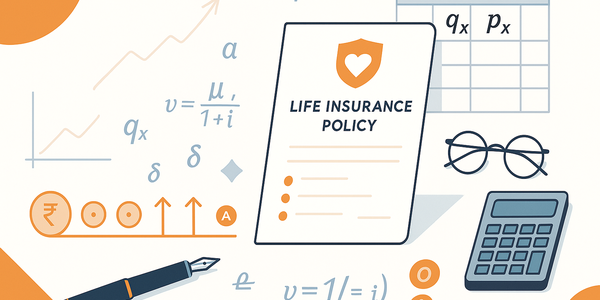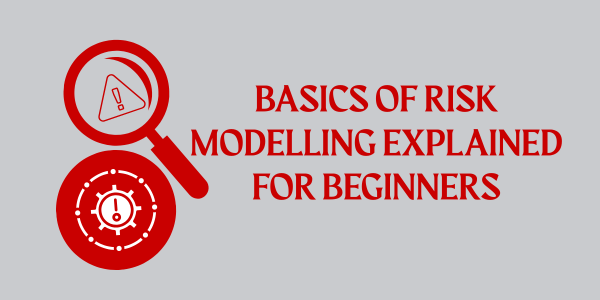The updated CB3 Business Management guide (Version 2, September 2025) explains how the Institute and Faculty of Actuaries (IFoA) delivers this subject. Unlike traditional theory-based exams, CB3 lets you run a virtual company through a five-week Business Game, helping you learn business strategy, leadership, and decision-making — the practical way. 🎯 What Is CB3? CB3 …
More-
📘 CB3 Business Management ( IFoA 2025 Edition) – Everything You Need to Know
-
🧭 CB3 (IAI) – How to Approach the New 2025 Pattern
Deep Analysis of the May 2025 vs November 2025 Papers The Institute of Actuaries of India has revamped the CB3 Business Management paper starting November 2025. While the May 2025 paper tested conceptual breadth through mixed MCQs and long case scenarios, the Sample Paper for November 2025 reveals a clear pedagogical shift — from passive …
More -
Most‑Asked Actuarial Interview Questions — Model Answers & Tips
Use this as a last‑week prep guide. You’ll find concise model answers, frameworks (STAR, 60‑sec pitch), and technical refreshers commonly tested in actuarial interviews. In this article Behavioral core (with model answers) Technical fundamentals Ready‑to‑use frameworks Lightning definitions One‑page checklist FAQs 1) Behavioral core (with model answers) Why do you want to be an …
More -
Understanding Life Insurance Terminology — An Actuary’s Perspective
Getting comfortable with life‑insurance vocabulary is the first big unlock for actuarial students. These words aren’t just definitions — they map to cashflows, reserves, pricing, regulation, and professional judgement you’ll use every day. In this article Policy basics (who/what/when) Benefits & product types The cashflow view Mortality & risk terms Actuarial notation you’ll meet early …
More -
Understanding the Time Value of Money – The Actuary’s Perspective
💰 One of the most fundamental principles in finance and actuarial science is the Time Value of Money (TVM). It’s the foundation upon which pricing, reserving, pensions, investments, and most financial decisions are built. In this blog, we’ll break down: What the Time Value of Money is, Why it’s crucial in actuarial work, The key formulas …
More -
How Much Do Actuaries Earn in India and Abroad? – 2025 Salary Guide
💰 With a reputation for being one of the most intellectually rewarding and financially lucrative careers, actuarial science attracts math-lovers, problem-solvers, and strategic thinkers alike. But how much do actuaries really earn in 2025 — both in India and around the world? 🇮🇳 Actuary Salaries in India (2025 Update) Actuarial roles in India are growing …
More -
Basics of Risk Modelling Explained for Beginners
Risk is everywhere — in the decisions we make, the investments we choose, and the businesses we build. But how do companies anticipate and prepare for future risks? The answer lies in risk modelling, a fundamental tool used across industries like insurance, finance, healthcare, and cybersecurity. In this blog, we’ll break down the basics of …
More -
How Actuaries Use Machine Learning in Real-World Scenarios
As data grows in volume, complexity, and velocity, traditional actuarial methods alone are no longer enough to meet the evolving demands of today’s industries. Enter machine learning — a powerful set of tools that enables actuaries to uncover deeper insights, automate processes, and enhance decision-making across sectors like insurance, pensions, banking, and healthcare. Machine learning …
More -
Exploring Global Career Opportunities for Indian Actuaries
🌍 In today’s interconnected world, the demand for actuarial talent is no longer confined to national borders. With strong technical foundations and growing global recognition, Indian actuaries are increasingly sought after by employers across continents. 📈 Why Are Indian Actuaries Gaining Global Attention? Indian actuarial students are known for: Strong mathematical and analytical skills Exposure …
More -
The future of Acturial Science in the age of AI
One of risk assessment in industries such as insurance, pensions, healthcare, and finance. Their primary function involves using mathematical models to predict future events — mortality rates, insurance claims, financial risks — and guide decision-making based on these predictions. Their toolkit has historically included: Statistical modeling Scenario analysis Predictive analytics Regulatory compliance However, this traditional …
More -
Insurance vs. Pension: Two Major Actuarial Career Tracks
So, you’re diving into actuarial science and wondering: Should I go the insurance route or explore the world of pensions? Good question — because while both careers involve math, risk, and a solid dose of spreadsheets, they’re two very different paths with unique flavors. Let’s break it down in a way that makes sense — …
More -
Why Excel Isn’t Enough: The Rise of Python and R in Actuarial Modelling
In the world of actuarial science, Excel has long been the trusted companion of professionals. It’s user-friendly, widely available, and powerful enough for many financial modeling tasks. But in today’s data-driven world, Excel alone is no longer sufficient for the increasingly complex needs of actuaries. Enter Python and R — two open-source programming languages that …
More -
Actuary Vs Statistician Vs Data Scientist: What’s The Difference?
Ever heard the joke: “A statistician, a data scientist, and an actuary walk into a bar… and model the price of beer differently”? Well, it’s not just a punchline — it’s a reality. These three roles may sound like they’re doing the same thing (crunching numbers all day), but trust us, their worlds are very …
More -
How Climate Change is Creating New Opportunities for Actuaries
🌍 Climate change is no longer a distant concern—it’s a balance-sheet reality. Rising sea levels, extreme weather, and evolving regulations are transforming the way insurers, banks, governments, and corporations measure risk. And whenever risk changes, actuaries move to the center of the conversation. Why Climate Risk = Actuarial Opportunity $\begin {array}{l|l|l|} \hline \hline \text {Climate-driven …
More -
Actuarial Internships: How to Get One and Why They Matter
🎯If you’re an actuarial student or aspiring actuary, there’s one golden opportunity you shouldn’t miss — an actuarial internship. While actuarial exams are critical, real-world experience is what sets you apart. Internships not only bring your textbook knowledge to life but also open doors to career-defining networks, skills, and job offers. 🧮 What Is an …
More














